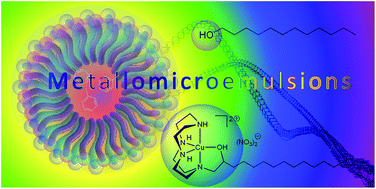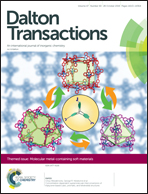Structural evolution in metallomicroemulsions – the effect of increasing alcohol hydrophobicity
Abstract
Small-angle neutron scattering and contrast variation has been employed to quantify how a series of alcohols with increasing hydrophobicity exert different abilities to structure a model toluene based metallomicroemulsion – a microemulsion system stabilised with a metallosurfactant. Classical microemulsion phase evolution and droplet structure are observed, leading to an oil rich core stabilised by a surfactant film containing a highly concentrated, hydrated metal ion layer.

- This article is part of the themed collection: Molecular metal-containing soft materials


 Please wait while we load your content...
Please wait while we load your content...